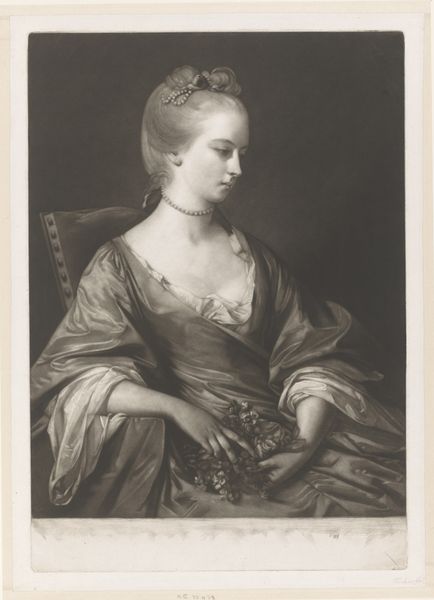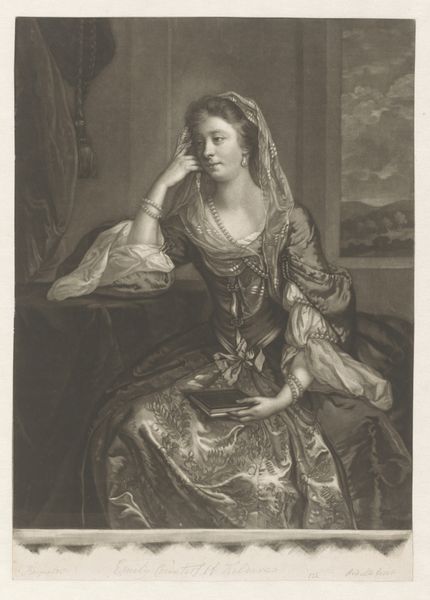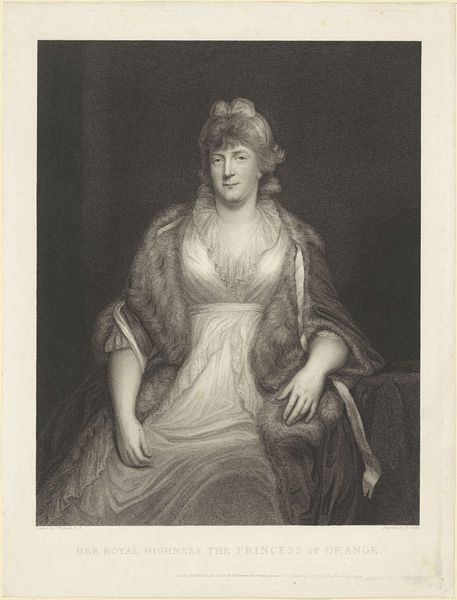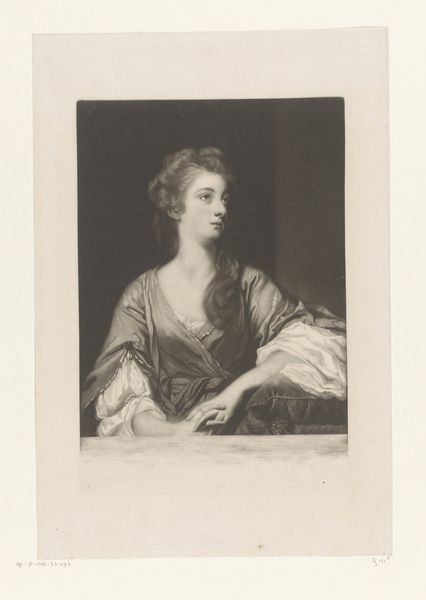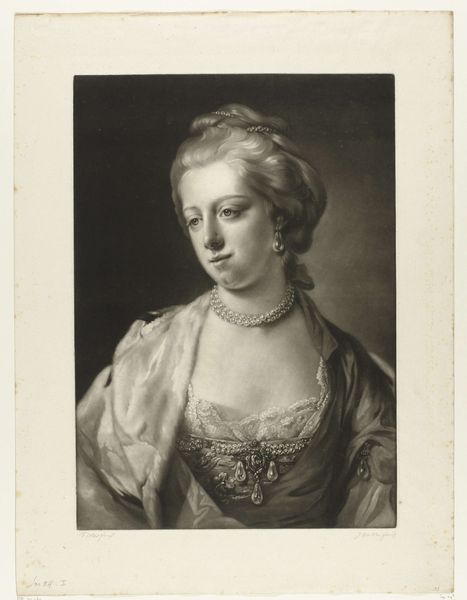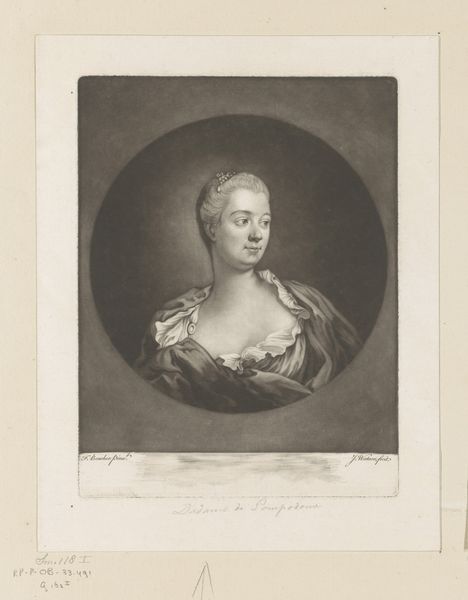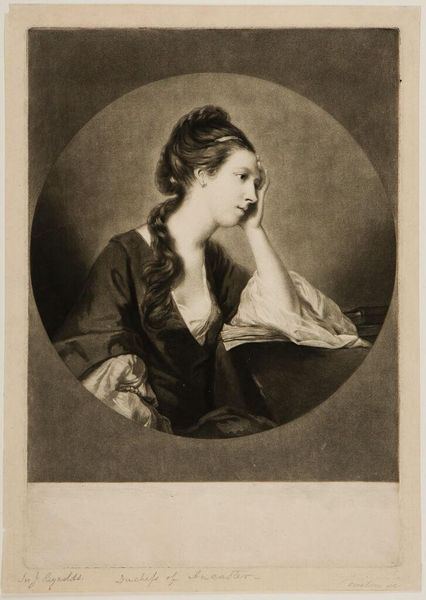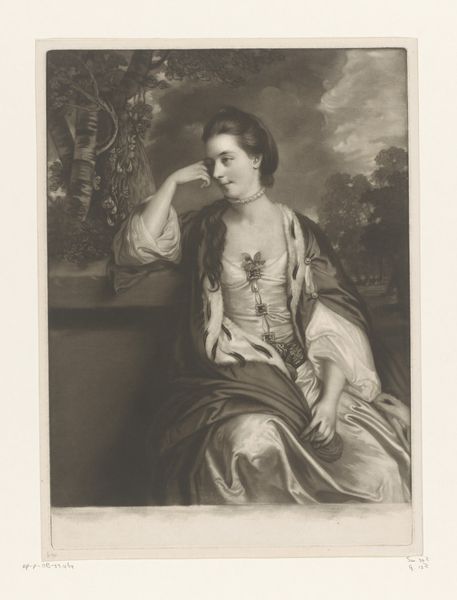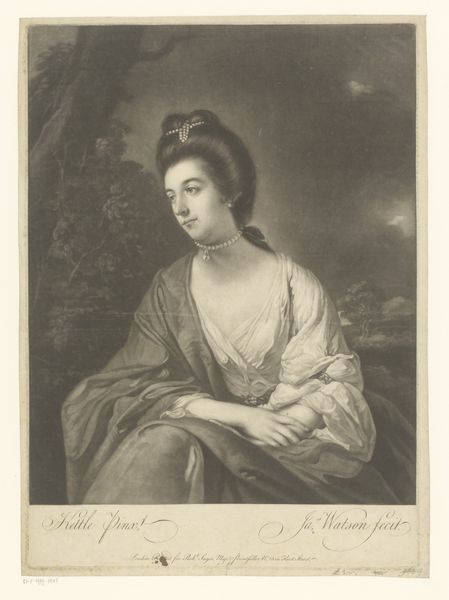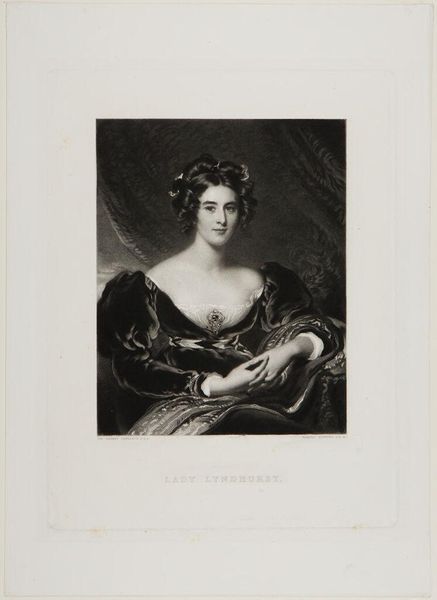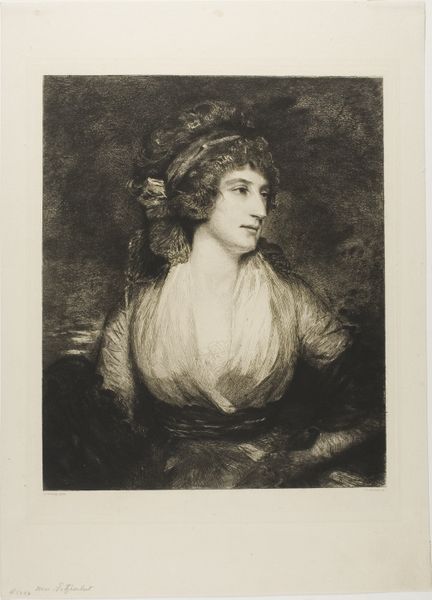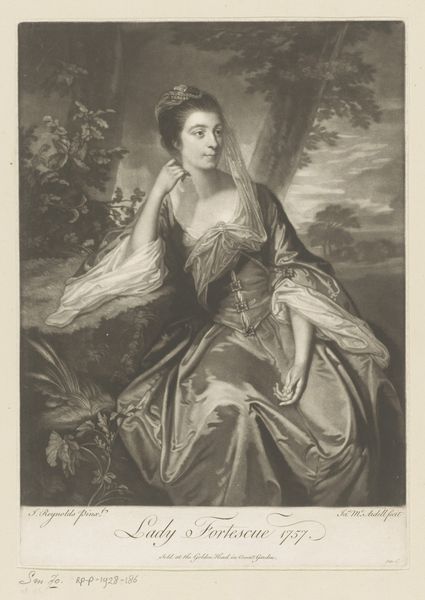
drawing, print, paper, engraving
#
portrait
#
drawing
#
baroque
# print
#
charcoal drawing
#
paper
#
engraving
Dimensions: 455 × 353 mm (image); 507 × 354 mm (plate); 578 × 445 mm (sheet)
Copyright: Public Domain
Curator: Here we have a remarkable print, "Esther Jacobs," dating back to around 1760, created by J. Spilsbury. It’s currently housed right here at the Art Institute of Chicago. Editor: It's immediately striking, this tonal range. Such soft gradations achieved in engraving, the whole effect is subdued, almost melancholic. Curator: Yes, Spilsbury masterfully uses the engraving technique. You see, prints like this were not simply replications; they served a critical role in distributing images and, by extension, concepts of status. Look closely at Esther's dress, her accessories... Editor: The fabric is particularly noteworthy; see how Spilsbury creates a visual dance between light and shadow, which shapes her gown to create a dramatic textural juxtaposition with the rest of the tonal values. Her pose also seems carefully studied. Her downturned gaze also projects thoughtfulness. It’s such careful formal composition at work. Curator: Indeed. Think about what this object represents culturally. Portraiture wasn't simply about memorializing a likeness; it was about projecting societal standing and belonging in the late 18th century. This was labor intensive, certainly. Each line engraved painstakingly to create not just an image of Esther Jacobs but an image crafted for circulation among a specific segment of society, reflecting her place within it. Editor: Yet, what interests me equally is the balance created through asymmetry. Esther is set off-center and framed on an angle, which invites further visual investigation, as if creating a tension which propels your gaze back to her facial expression. It elevates this portrait beyond pure documentation. Curator: It highlights the inherent link between the art object and its purpose— the perpetuation of social hierarchies. The choices of who gets depicted, the media used, how it's circulated; all are reflective of cultural dynamics. Editor: The technical finesse combined with expressive subtleties speaks volumes. Ultimately, an image remains which goes far beyond social markers of 18th century England. Curator: Absolutely. We begin to appreciate not only her likeness and circumstances, but how production plays into identity making during that era. Editor: Agreed. Seeing this through a lens of both the structural means and what those means achieve only enriches the encounter.
Comments
No comments
Be the first to comment and join the conversation on the ultimate creative platform.
